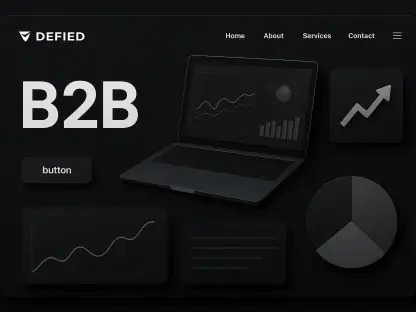Welcome to an insightful conversation on the nuances of B2B email marketing with Anastasia Braitsik, a globally recognized leader in SEO, content marketing, and data analytics. With years of experience guiding brands through the complexities of digital strategies, Anastasia has a keen understanding of how to measure success in email campaigns. In this interview, we dive into the pitfalls of over-relying on external benchmarks, the importance of context in data interpretation, and practical ways marketers can refine their approach to performance metrics. Join us as we explore why benchmarks can sometimes mislead and how to use them wisely to drive better results.
How do you see email marketers getting tripped up by placing too much trust in external benchmarks when assessing their campaigns?
Many marketers lean on external benchmarks because they offer a quick, seemingly objective way to gauge performance. But the trap lies in assuming these numbers are a universal standard. They often don’t account for the unique factors of a brand’s audience or strategy. This over-reliance can skew perceptions—marketers might think they’re underperforming when they’re actually doing fine, or worse, believe they’re crushing it when there’s room for improvement. It’s like using someone else’s roadmap without knowing if you’re even on the same journey.
What are some of the biggest dangers of accepting these benchmarks at face value without digging into their reliability?
The risks are significant. Strategically, a marketer might pivot their entire email program based on misleading data, like chasing an unrealistic open rate that doesn’t align with their industry. Tactically, they could waste resources tweaking subject lines or send times to match a flawed benchmark, ignoring what actually resonates with their audience. I’ve seen companies double down on frequency because a benchmark suggested ‘more is better,’ only to see unsubscribes spike. It’s a costly misstep that could’ve been avoided with a critical eye.
Why is it so crucial to source benchmarks directly from your email service provider when trying to get accurate data?
Using benchmarks from your ESP ensures consistency in how metrics are calculated and reported. ESPs apply the same methodology to their data as they do to yours, which reduces discrepancies. Plus, they often handle nonhuman interactions—like bot opens or clicks from security tools—in a uniform way. This consistency makes the data far more reliable than third-party benchmarks, which might use different definitions or filters. It’s about comparing apples to apples, not apples to oranges.
How does a brand’s industry play into the relevance of email marketing benchmarks?
Industry context is everything. Performance metrics vary widely because audience behaviors and expectations differ across sectors. For instance, a tech company might see lower open rates due to inbox overload, while a retail brand could spike during holiday seasons. Seasonal patterns also mess with comparisons—think of industries like travel, where summer benchmarks look nothing like winter. If you’re not accounting for these differences, you’re setting yourself up for irrelevant conclusions.
Geography seems to be another key factor in benchmark accuracy. Can you unpack how regional differences impact email performance?
Absolutely. Geography influences email metrics in ways people often overlook. Weather patterns can shift engagement—think of colder regions where people are indoors more, checking emails. Cultural norms play a role too; some regions prioritize direct communication over promotional content. Then there are local laws, like GDPR in Europe, which can limit tracking or mandate stricter opt-ins, affecting open and click rates. I’ve seen brands misjudge their performance because they didn’t realize their benchmark was skewed by a region with different privacy rules.
You’ve highlighted the importance of rules around inactive subscribers. How do these rules affect benchmark comparisons?
Inactivity rules are a hidden variable. Some ESPs, especially those serving smaller senders with pooled IP addresses, enforce strict policies on inactive subscribers, which can inflate open and click rates by trimming unresponsive contacts. Larger brands with dedicated IPs might set looser rules, keeping more inactives on their lists, which can lower their metrics. When comparing benchmarks, if your rules don’t match those of the data set, you’re not seeing the full picture. It’s a subtle but critical mismatch.
Even with solid benchmarks, you’ve noted they often don’t align with a brand’s internal metrics. What’s behind this disconnect?
It’s often an apples-to-oranges issue. External benchmarks aggregate data across diverse brands, industries, and strategies, while your internal metrics reflect your specific audience, goals, and tactics. Your sending cadence, content style, or even how you define an ‘open’ might differ. I’ve worked with clients who panicked over low click rates compared to a benchmark, only to realize their audience valued engagement differently—like downloading resources over clicking links. That context is lost in broad data sets.
Looking ahead, what’s your forecast for the role of benchmarks in B2B email marketing over the next few years?
I think we’ll see a shift toward more personalized and contextual benchmarks. As data tools get smarter, ESPs and platforms will likely offer hyper-specific benchmarks tailored to a brand’s industry, region, and even audience segments. Privacy changes will continue to challenge how we measure engagement, pushing marketers to focus on internal trends over external comparisons. My hope is that benchmarks evolve from a crutch to a starting point—something to spark curiosity and deeper analysis rather than dictate strategy. Marketers who adapt to this mindset will stay ahead of the curve.









